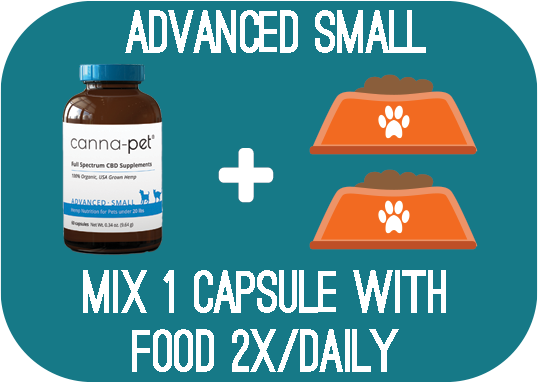Italian Greyhound Breed Guide

Breed Group:
Companion Dogs
Get 30% off
Join our Newsletter
Sign Up Today
Italian Greyhound Background Info & History
The Italian Greyhound personality is gentle and loving, just like their larger relatives. Their slender and petite body puts them at just under a foot in height. They are commonly referred to as the miniature version of the original greyhound. The Italian Greyhound breed is old and regal, dating back to 2,000 years ago.
Records show that they originated from Turkey and Greece, and later made their way to Southern Europe during the middle ages. Aristocrats and noblemen loved this breed and they quickly became a prized companion, especially in Italy. Throughout Europe, the Italian Greyhound was loved by royalty alike.
High-class citizens liked this breed because of their unique appearance and their small size. This elegant breed eventually made their way to the United States and was recognized by the American Kennel Club in 1886. Even in America, the Italian Greyhound gained quick popularity among famous and wealthy citizens.
Italian Greyhound Temperament & Personality
Italian Greyhound characteristics include affection and gentleness. An Italian Greyhound is loving towards close family and friends but can be shy and timid towards strangers. Once they feel comfortable with someone, they can be an extremely loyal pet. In order to have an outgoing pup who is friendly with everyone, make sure to socialize them at a young age. Italian Greyhounds are quite playful and spunky.
They are notoriously famous for fearlessly jumping off high surfaces or leaping into action as soon as they get a burst of energy. This reckless behavior often leads to broken or fractured bones, so make sure to look out for any injuries in your Italian Greyhound. Some Italian Greyhounds have a high prey drive, which means they should always be kept in an enclosed space. If given the chance, this dog will take off into a sprint to catch small animals and birds.
Make sure to keep them on a leash at all times during their daily walks. It is also important to note that this breed is very sensitive to the cold. Often times you will see them hiding underneath a blanket or pillow to keep warm. This can make house training difficult if they refuse to go to the bathroom outside. Many Italian Greyhound owners buy their pets sweaters to keep them warm and cozy.
Italian Greyhound Trainability
Italian Greyhounds are not an easy breed to train. It takes dedication, commitment, and patience to properly train this dog. Professionals suggest that the owner should be very experienced in training a difficult breed. For extra assistance, consider enrolling your dog in a training course.
Keep in mind that the Italian Greyhound is a sensitive breed. That means they need constant praise and positive reinforcement by their owners. This is a critical factor when training your Italian Greyhound. Make sure to never use harsh or negative training tactics when dealing with your dog.
No matter what breed you are training, make sure to start the process as early on as possible. Socialize your pet with different people, places, and experiences so they become more comfortable with normal daily interactions.
Exercise Requirements for Italian Greyhounds
Italian Greyhounds are a ball of energy and need plenty of exercise to stay happy and healthy. At a minimum, this breed should be walked for at least an hour every day. Since this breed has a high prey instinct, make sure to keep them on a leash at all times.
An Italian Greyhound does very well with other dogs. They love to play and chase dogs of similar size, which is another great way for them to get their daily exercise. Anytime you let your Italian Greyhound off their leash, make sure they are secured in an enclosed space.
Other popular exercises for an Italian Greyhound include lure coursing, obedience training, and agility coursing. Many owners partake in these fun activities in order to physically and mentally stimulate their Italian Greyhound pet. These practices will also work hand-in-hand with your training efforts.
Italian Greyhound Lifespan
The Italian Greyhound life expectancy is 12-15 years.
Popularity of an Italian Greyhound
This breed peaked in popularity during the 1600’s when they became the favorite breed among European royalty. They had a reputation for being a high class and selective breed with desirable qualities. During both World Wars, the Italian Greyhound saw a sharp decline in their popularity.
Then in 1886, the Italian Greyhound was recognized by the American Kennel Club. Once they were officially in the United States, breeders were able to slowly increase their popularity, and even helped to re-establish their popularity in England after both World Wars.
Today, the Italian Greyhound is ranked 72nd most popular breed in the United States. Their petite size, lively spirit, and loving attitude make this breed an easy pet for any type of household.
Feeding Recommendations for Italian Greyhounds
The food you give your Italian Greyhound will directly affect their overall health throughout their lifetime. When choosing the right pet food, look for high quality and all-natural ingredients. Make sure to stay away from labels highlighting corn, animal by-products, or soy as their main ingredients.
On Average, an Italian Greyhound should consume between ½ – ¾ cup of food, split into two meals daily. This varies depending on your pet’s age, activity level, size, and metabolism. All these factors should be highly considered when creating a proper feeding regimen for your pet.
Professionals recommend using a raised dog bowl to compensate for their tall legs. Lastly, be sure to always have fresh water available at all times. Water should be changed at least once a day to prevent bacteria from growing.
How to Groom an Italian Greyhound
This breed has a short and soft coat that comes in a variety of colors. Many of these dogs have signature white spots or patches, mixed with either chocolate, grey, black, tan, or red. Luckily for pet owners, this breed needs very little grooming to maintain a healthy coat. Brushing once a week is recommended to rid the coat of any dirt or loose hairs. A small rubber bristle brush works best on their fine coat.
Only bathe your Italian Greyhound when needed. This will vary on the dog considering some Italian Greyhounds enjoy rolling around in the dirt or finding themselves in sticky situations. Always use a sensitive dog shampoo that has been recommended by your veterinarian. Make sure to brush their teeth at least once a week. This will prevent bacteria or tartar from building up. Also be sure to trim their nails once every two weeks. Overgrown and split nails can cause discomfort or pain and should be trimmed as needed.
Are Italian Greyhounds Good With Kids?
The temperament of an Italian Greyhound works well with children. They love to play and chase anyone or anything who will give them the attention they need. Keep in mind that this breed is very delicate. That means they can easily become injured when rough housing with kids.
Younger children are not recommended to live with an Italian Greyhound unless they know how to properly treat and care for them. Make sure to always supervise any interactions between a dog and a child.
Train your pet at an early age to behave calmly around children. When it comes to your child, teach them to never take away your pups food or interrupt when they are sleeping. All in all, Italian Greyhounds are a loving breed that works well with any type of household.
Italian Greyhound Health Problems
Below is a list of the most common Italian Greyhound health issues.
Color Mutant Alopecia: This inherited skin condition causes dryness, itchiness, and loss of hair in my dog breeds. Gradually a dog’s coat will begin to thin out, and eventually, it can lead to a patchy coat and irritated skin.
Deafness: Dogs can experience loss of hearing due to wax build-up, untreated ear infections, old age, or trauma. Deafness can either be congenital (genetic inheritance) or acquired depending on the individual animal.
Hypothyroidism: Hypothyroidism occurs in dogs who have a low level of thyroid hormones produced in their body. Initial symptoms of Hypothyroidism include fluctuation in weight and skin problems. A simple blood test is required for diagnosis and can be quickly cured with a synthetic hormone pill.
Juvenile Cataracts: This occurs when a white film develops over the lens of the eye. In serious cases, Cataracts can lead to blindness or Glaucoma.
Von Willebrand’s Disease: This inherited blood disease occurs when the blood is not able to clot properly, which leads to excessive bleeding. Symptoms include nosebleeds, bleeding gums, blood in the urine, bruising skin, or excessive bleeding after surgery.
Luxating patella: This health issue occurs when the kneecap becomes dislocated from its position in the thigh bone. Luxating patella is most common in smaller breeds like the Italian Greyhound.
More Resources
National Breed Website: Italian Greyhound Club of America
Italian Greyhound Rescue: Italian Greyhound Club of America Rescue
Health Issues Associated with this Breed:
- Allergies
- Anxiety
- Cataracts
- Cryptorchidism
- Epilepsy
- Hip Dysplasia
- Hypothyroidism
- Inflammation
- Legg-Calve-Perthes Disease
- Pain
- Patellar Luxation
- Portosystemic Shunt (PSS)
- Progressive Retinal Atrophy (PRA)
- Separation Anxiety
- Vitreous Degeneration
- von Willebrand's Disease (vWD)





